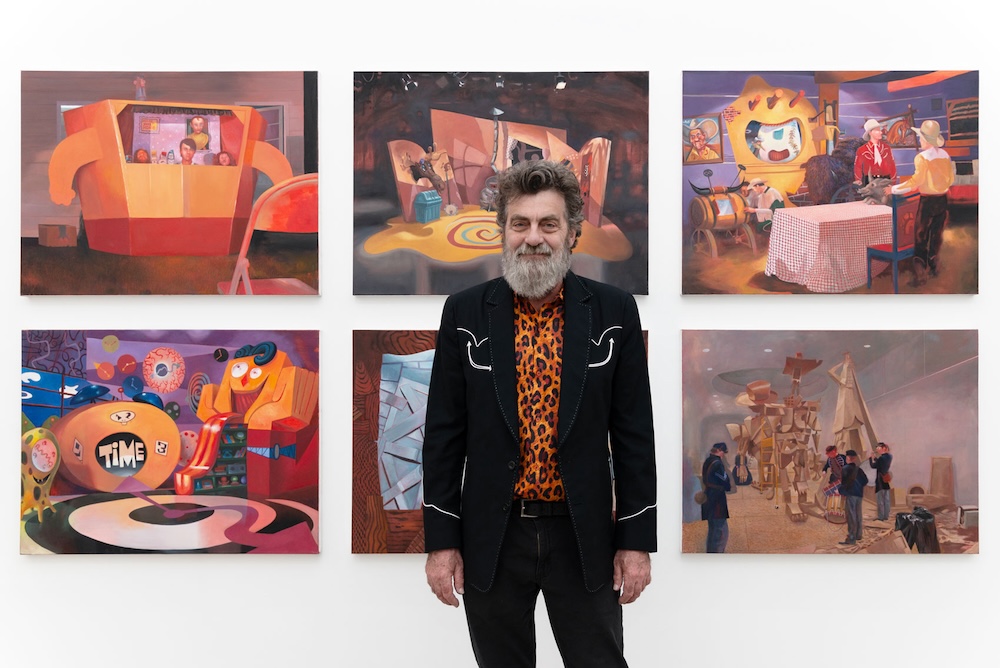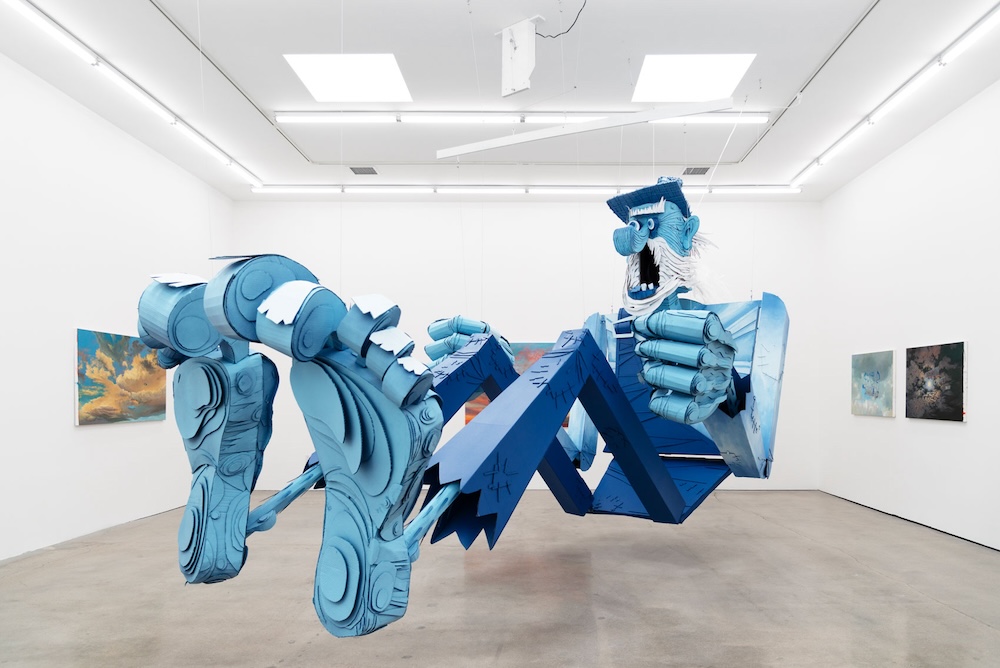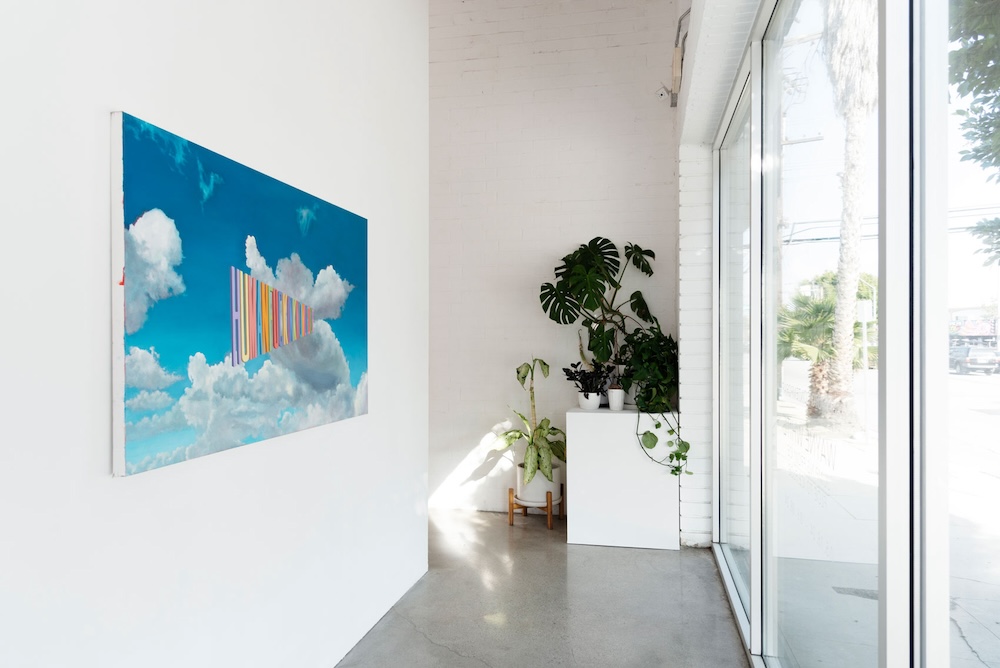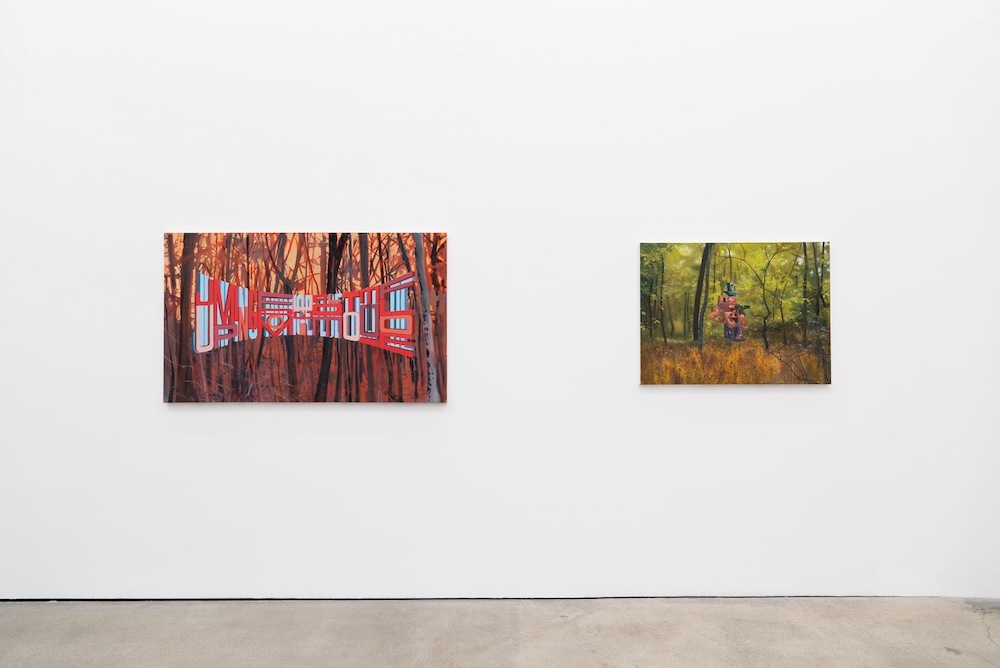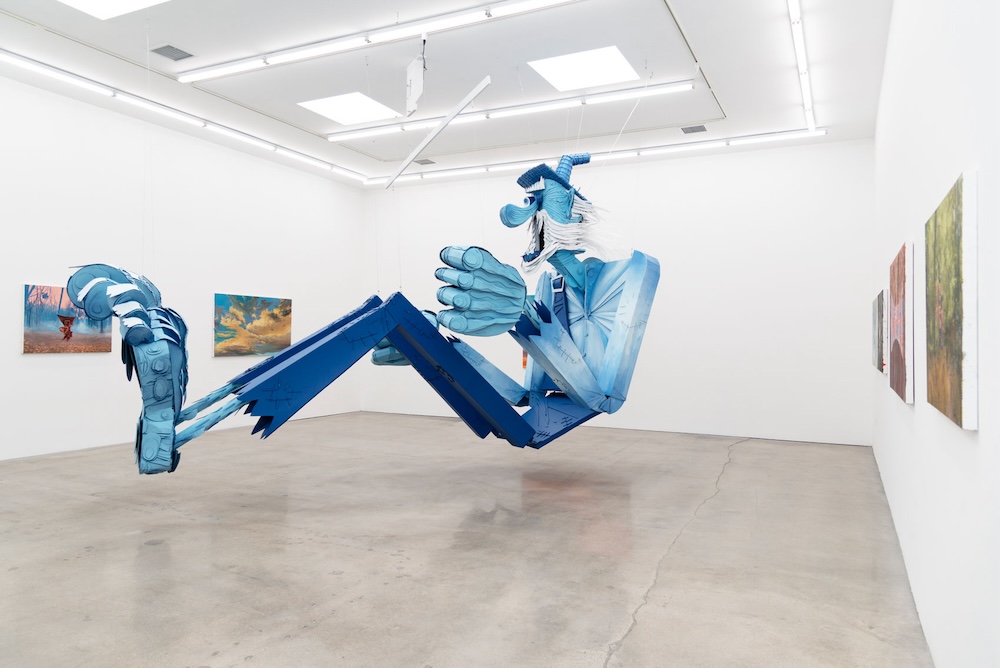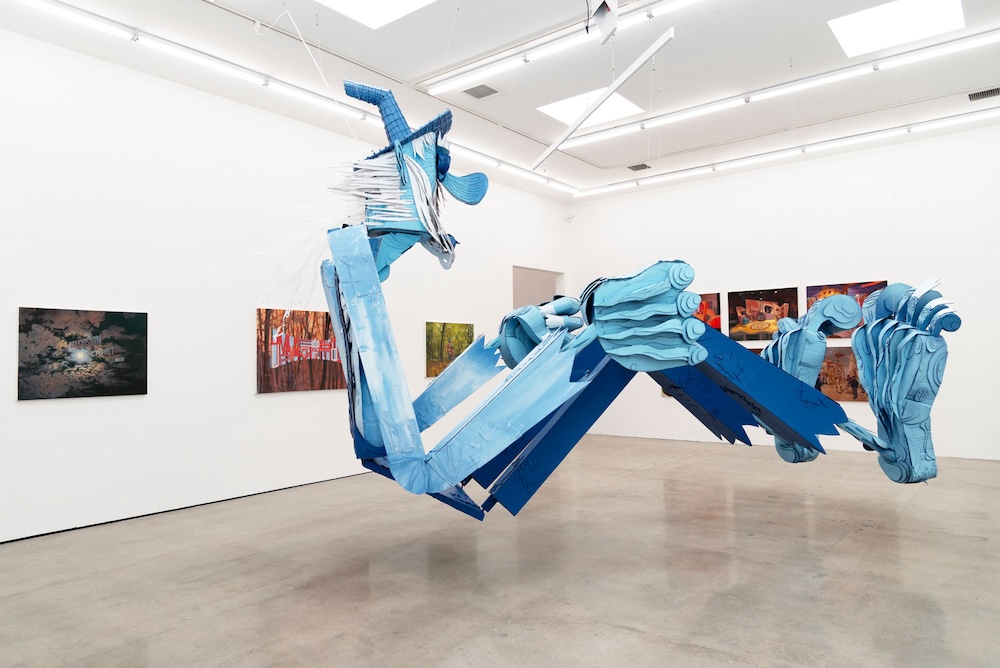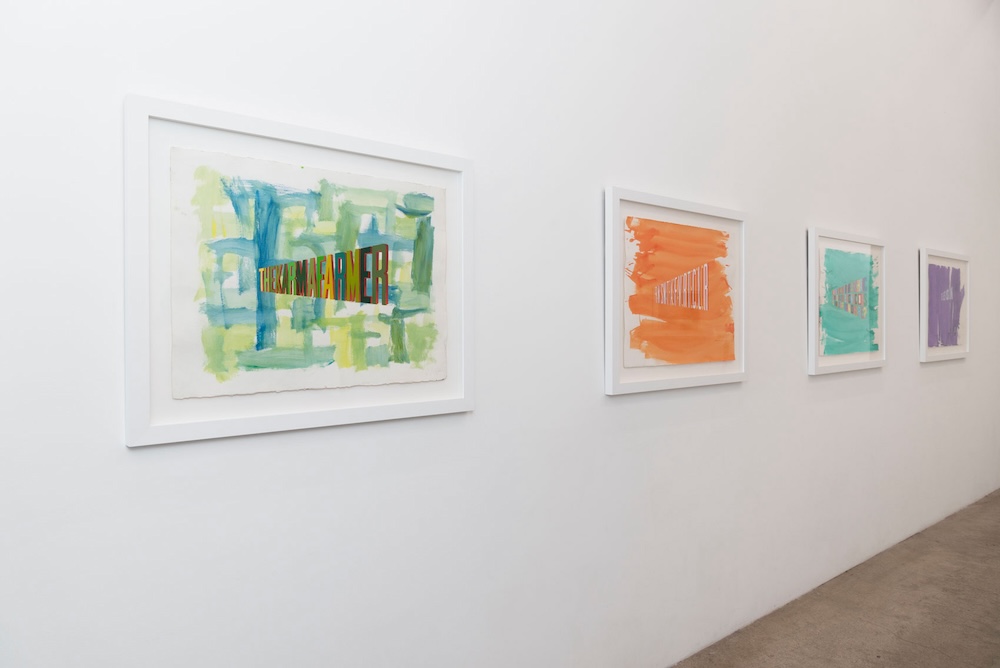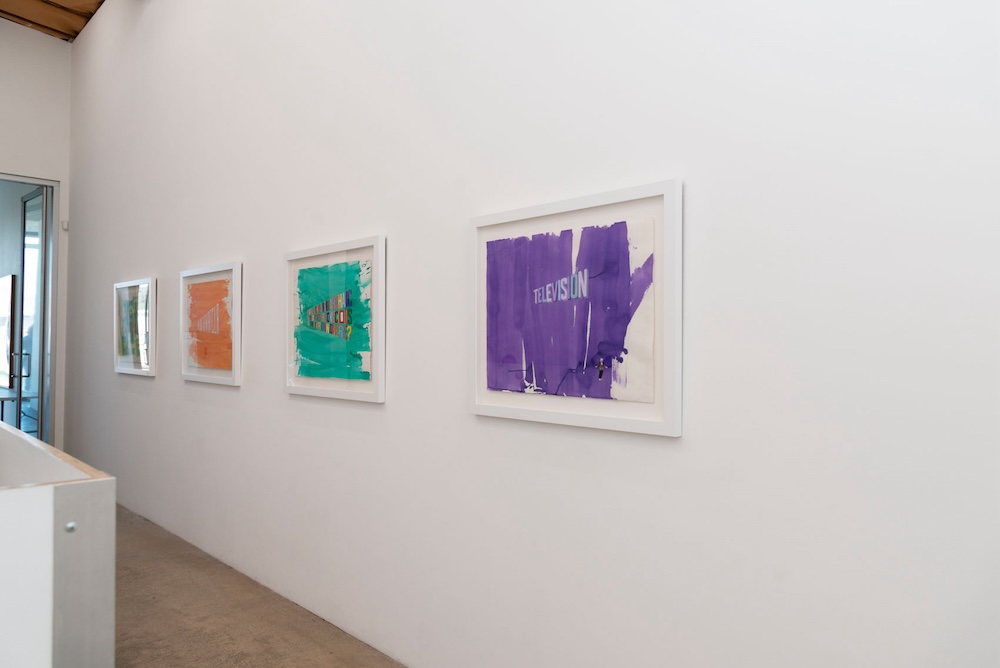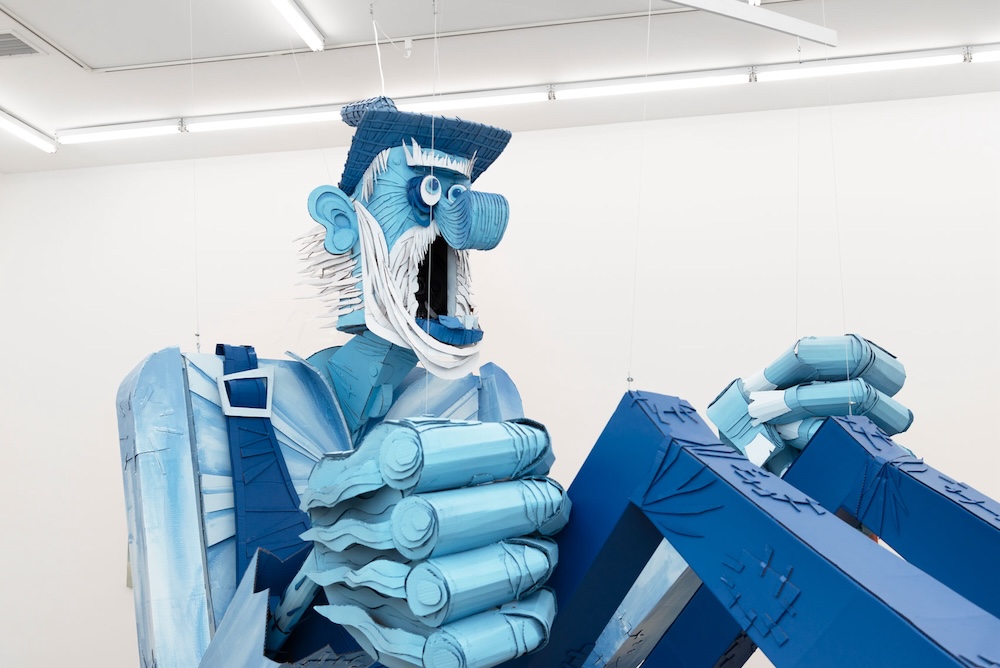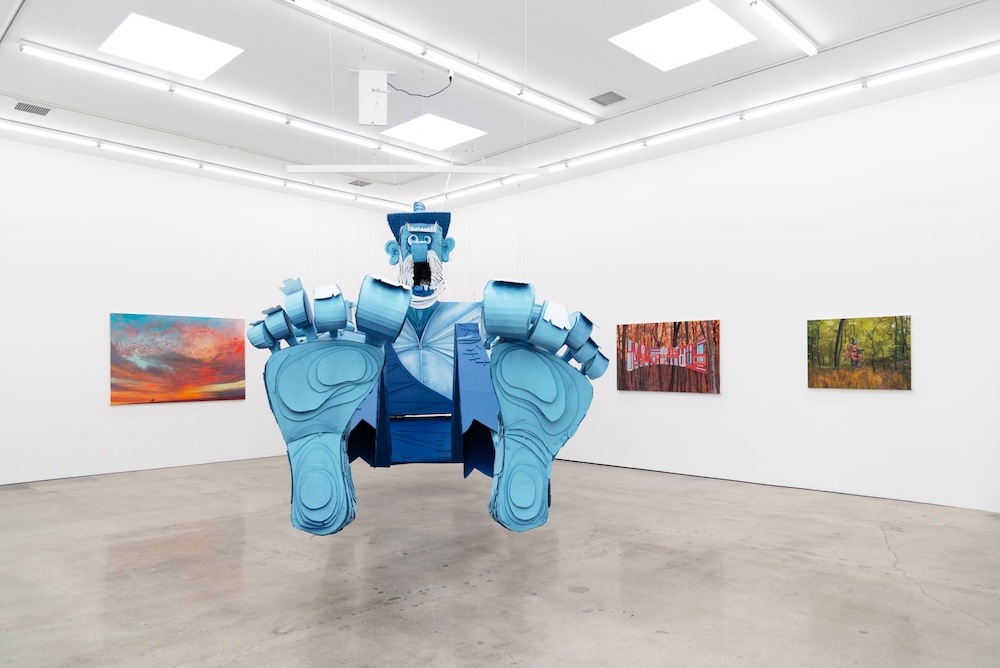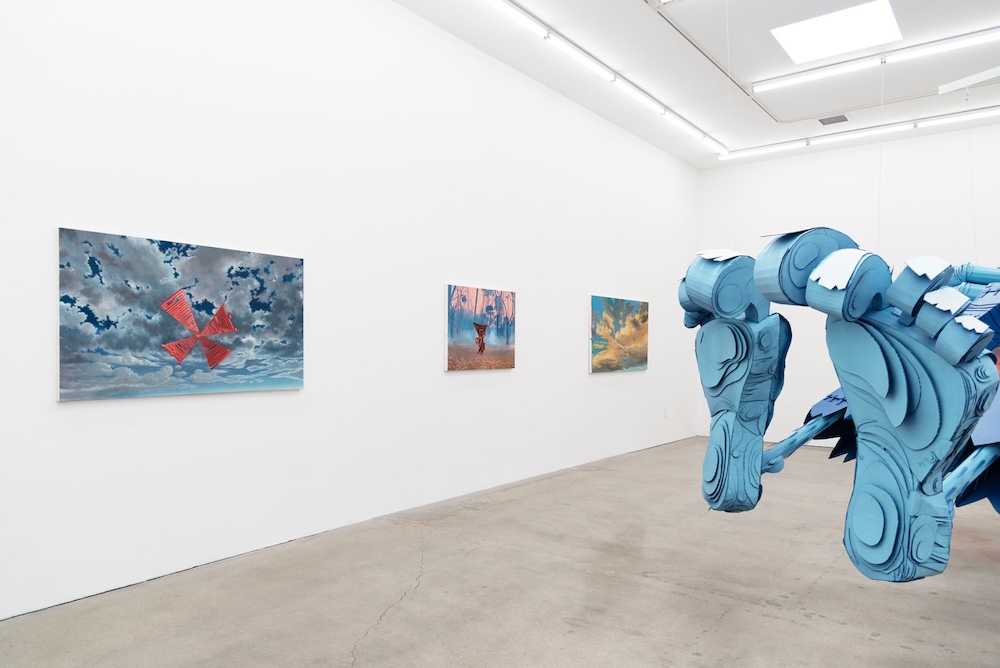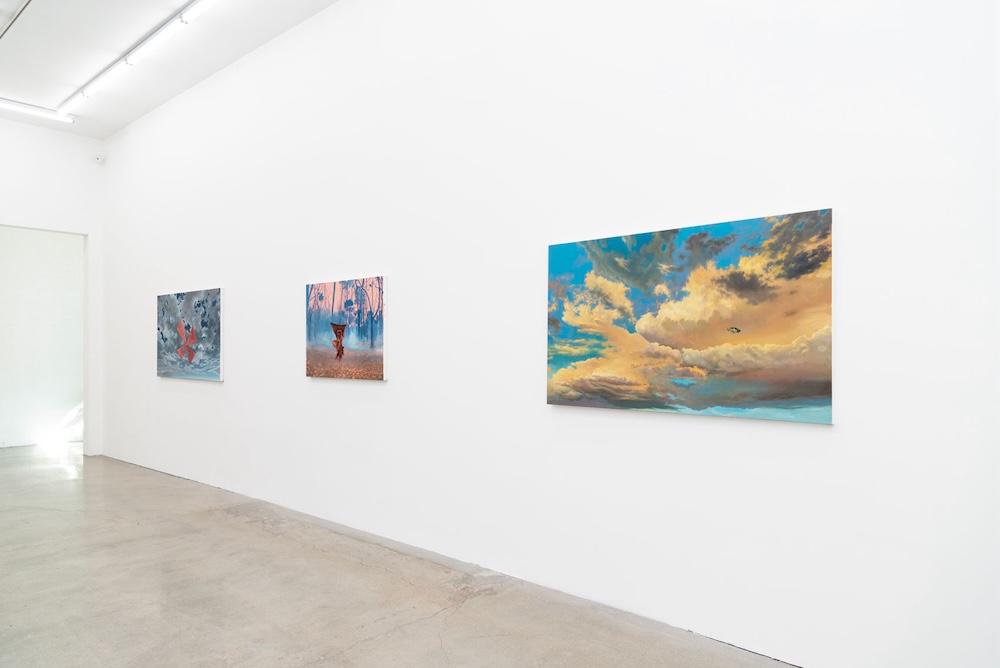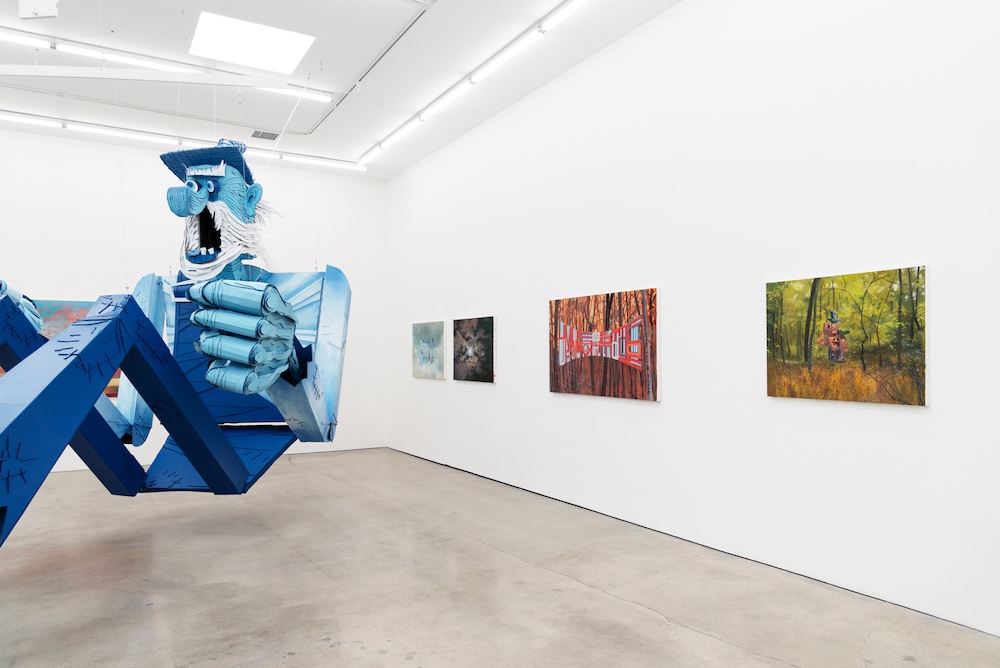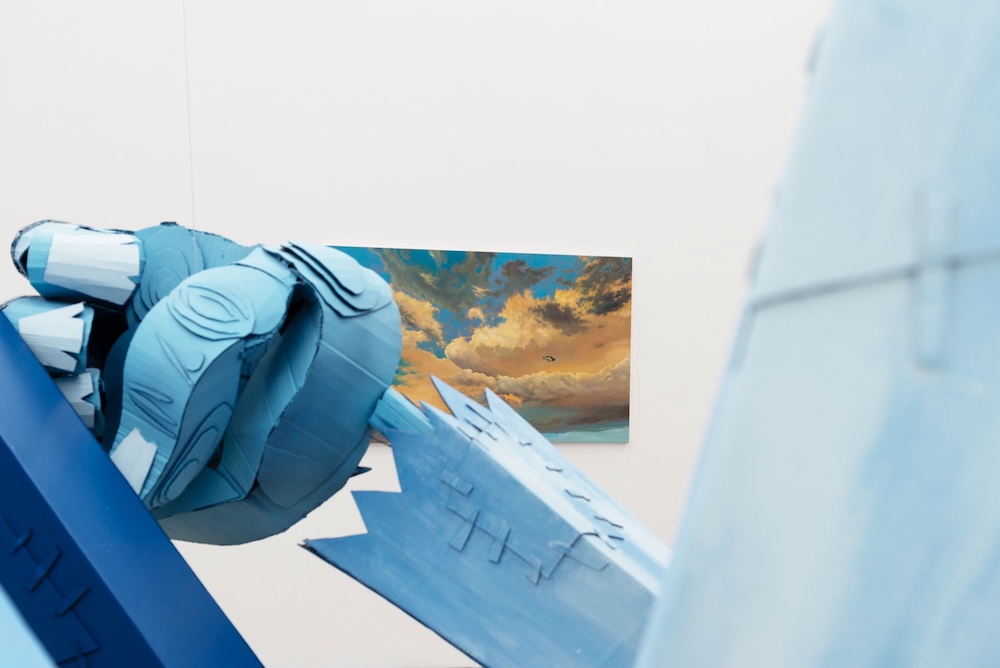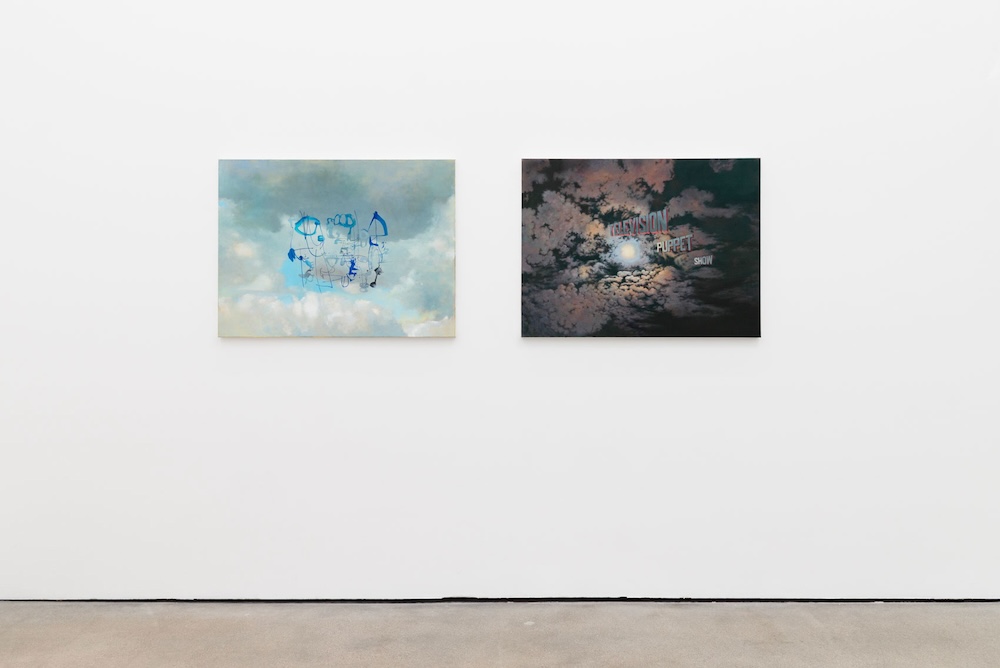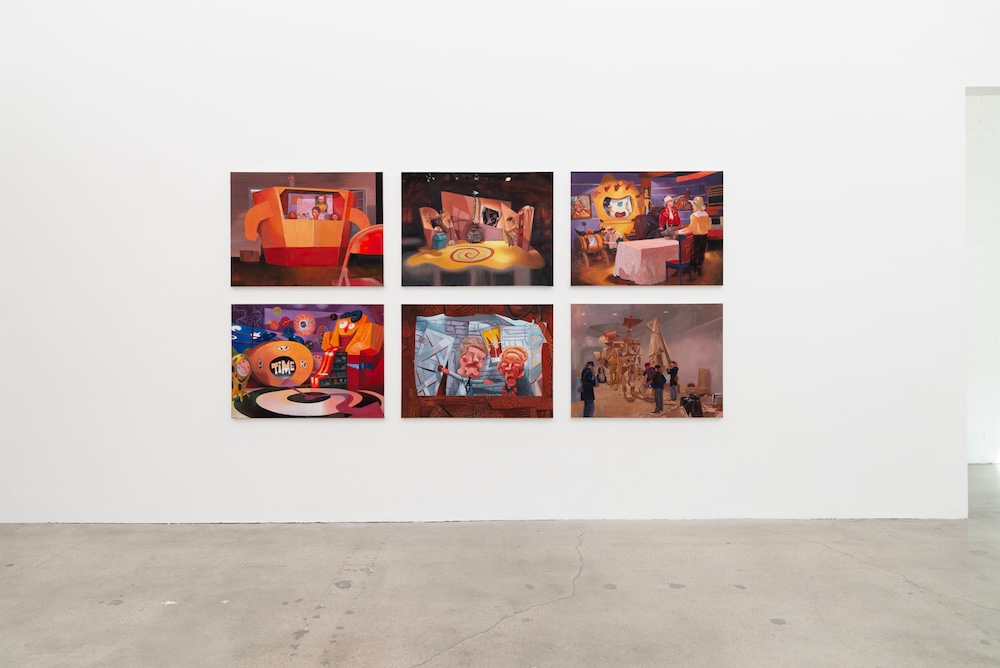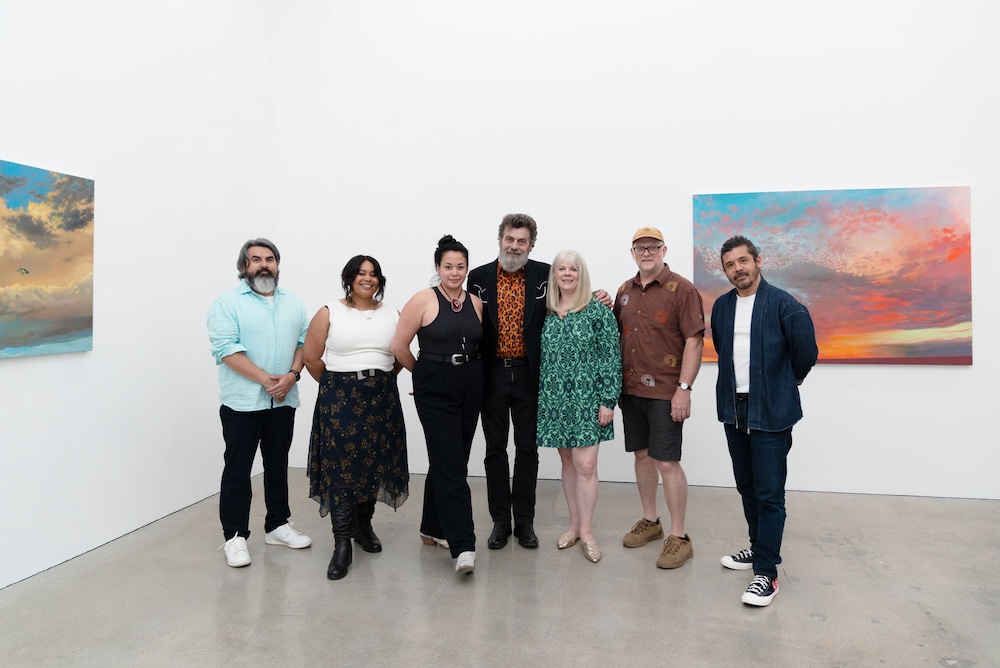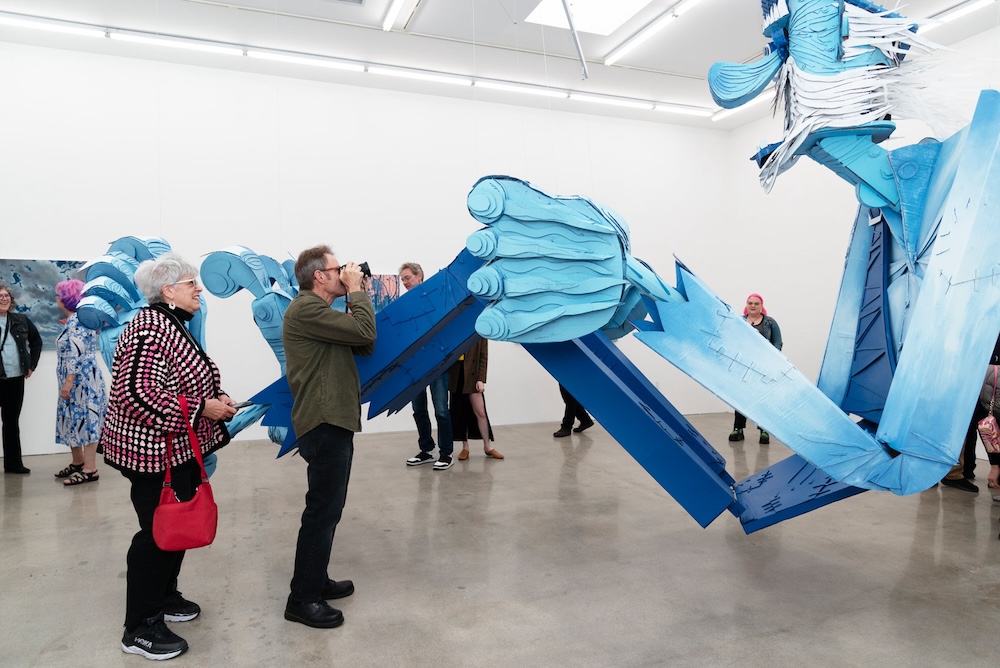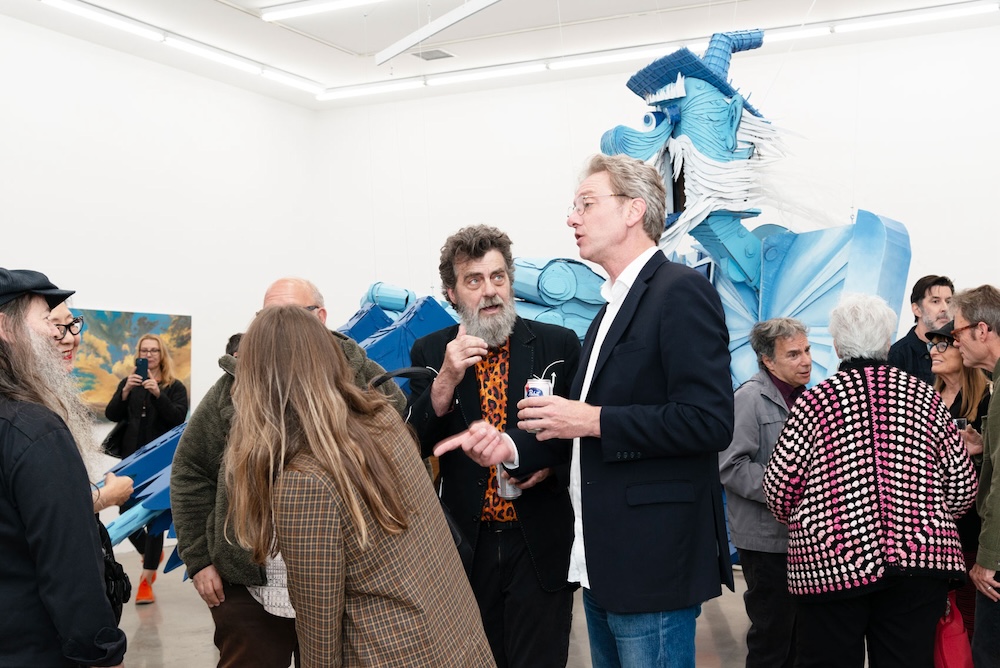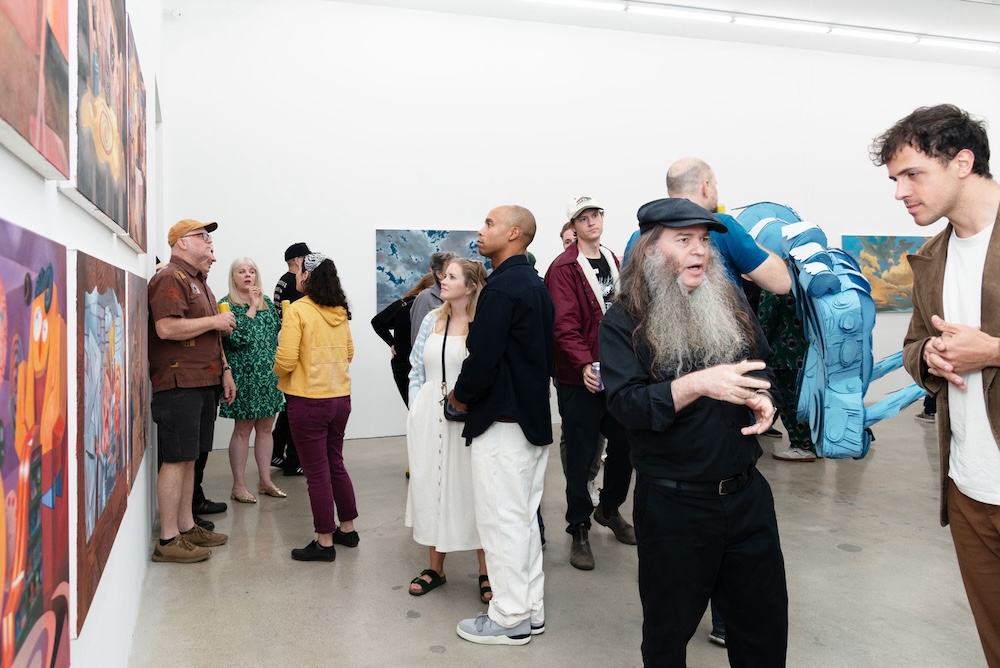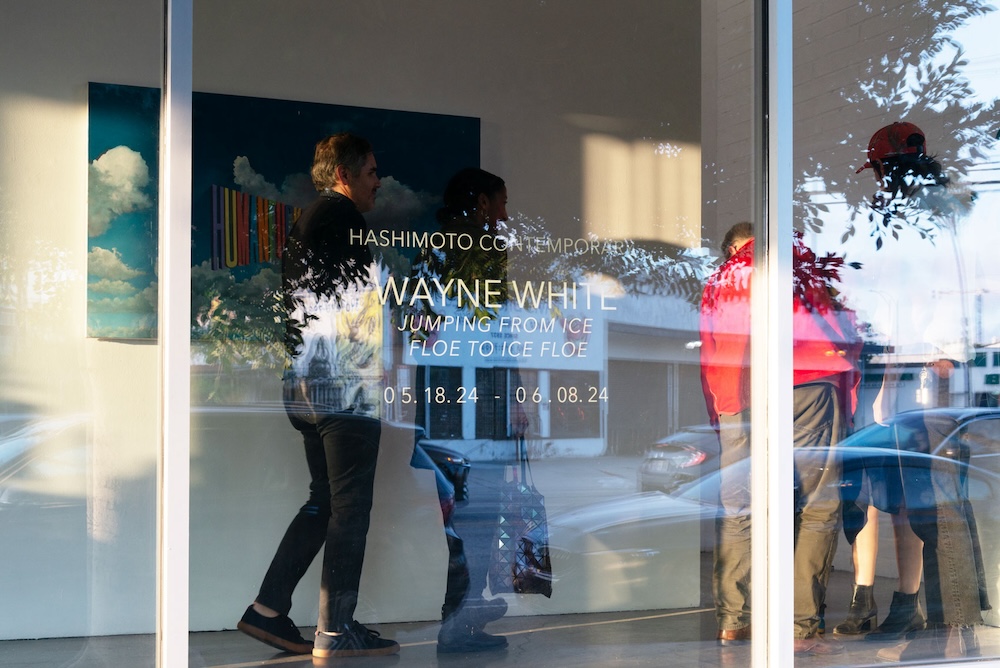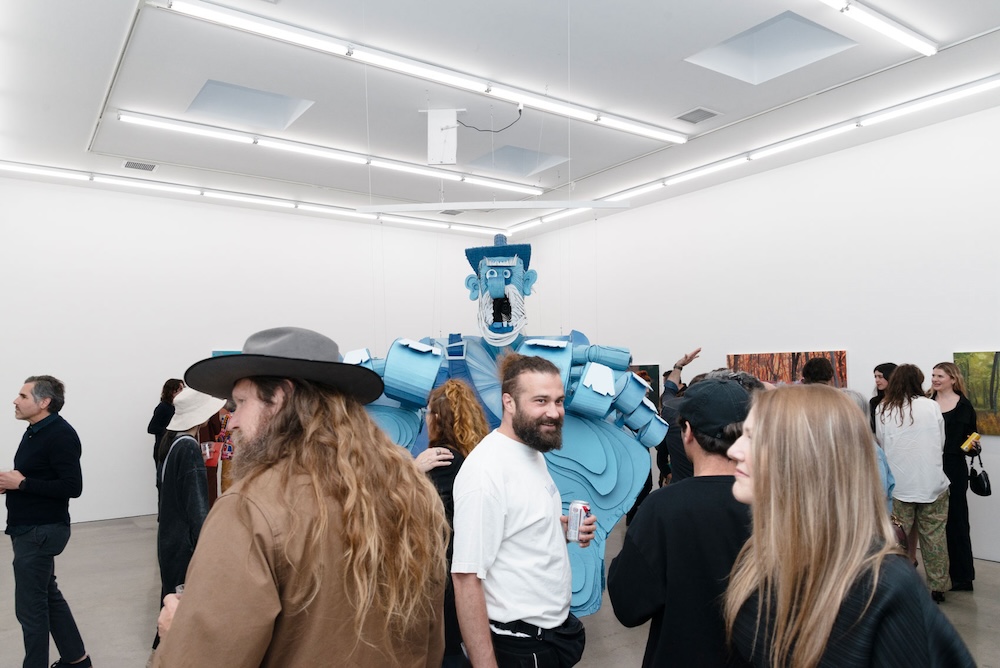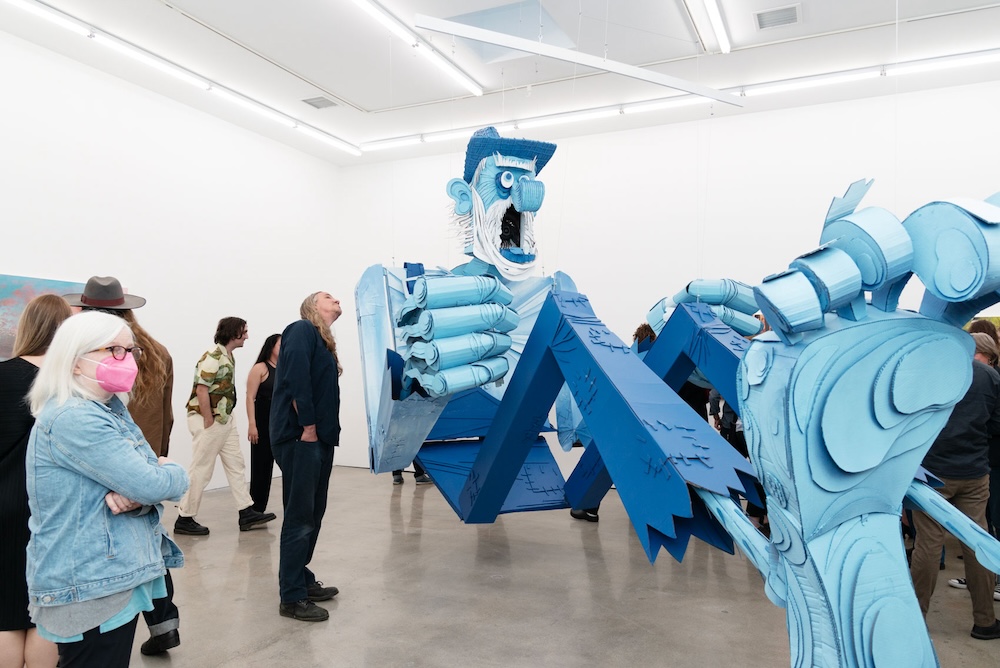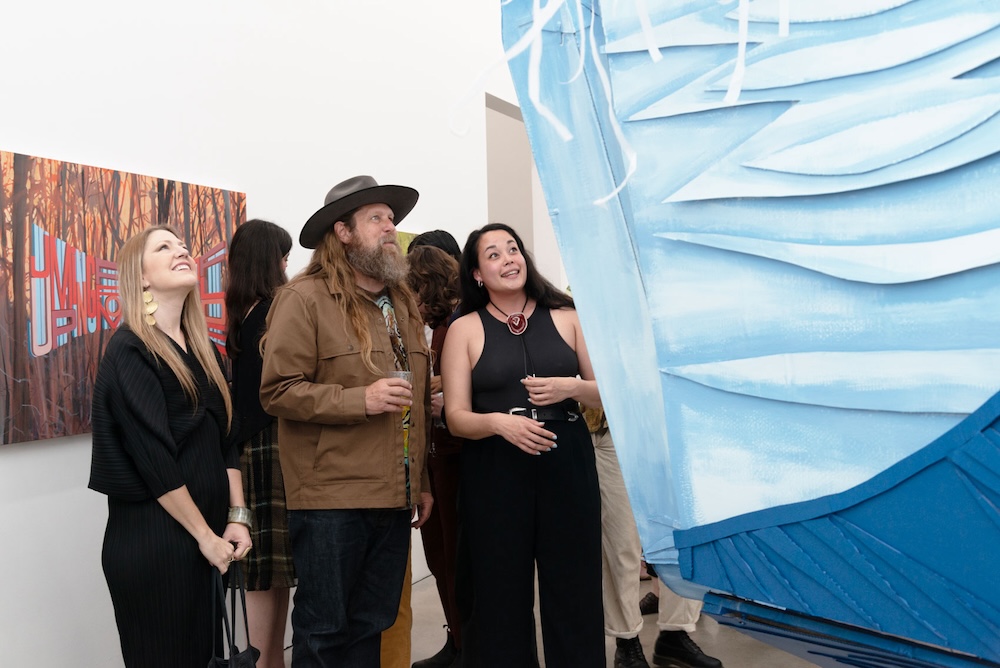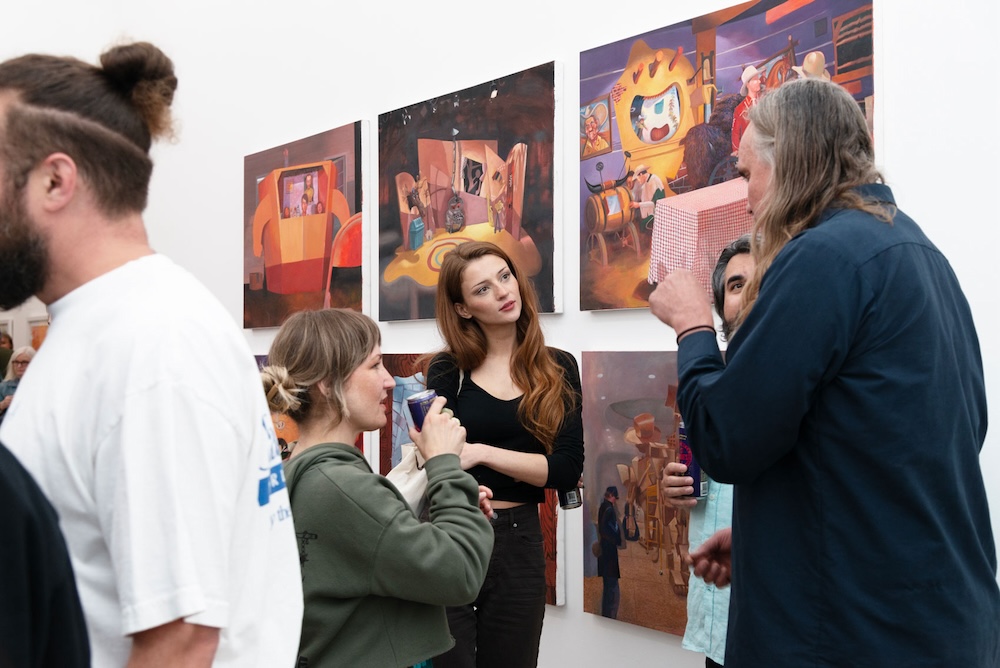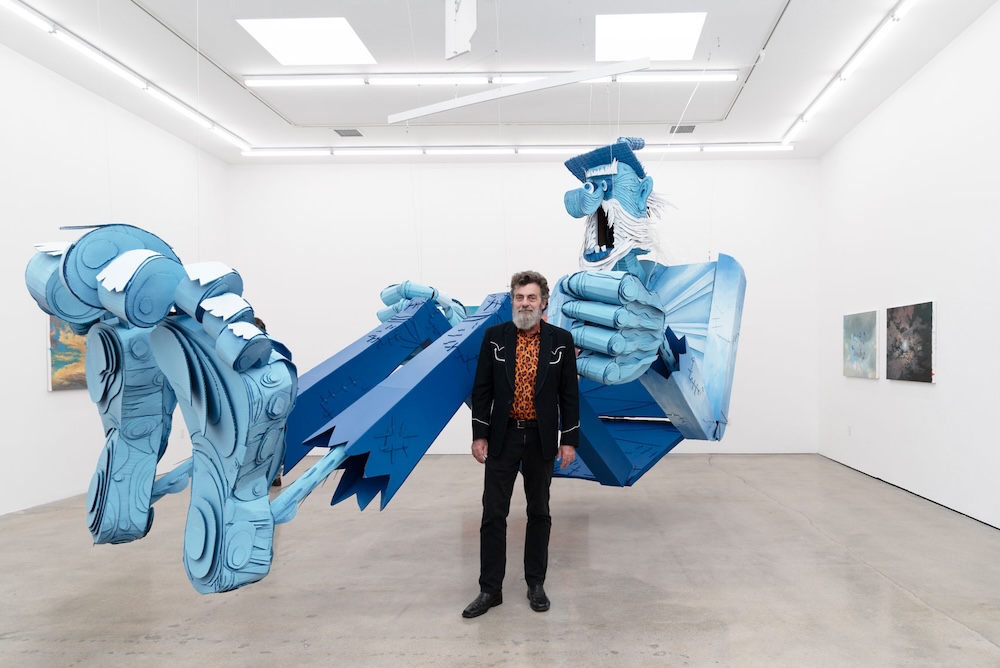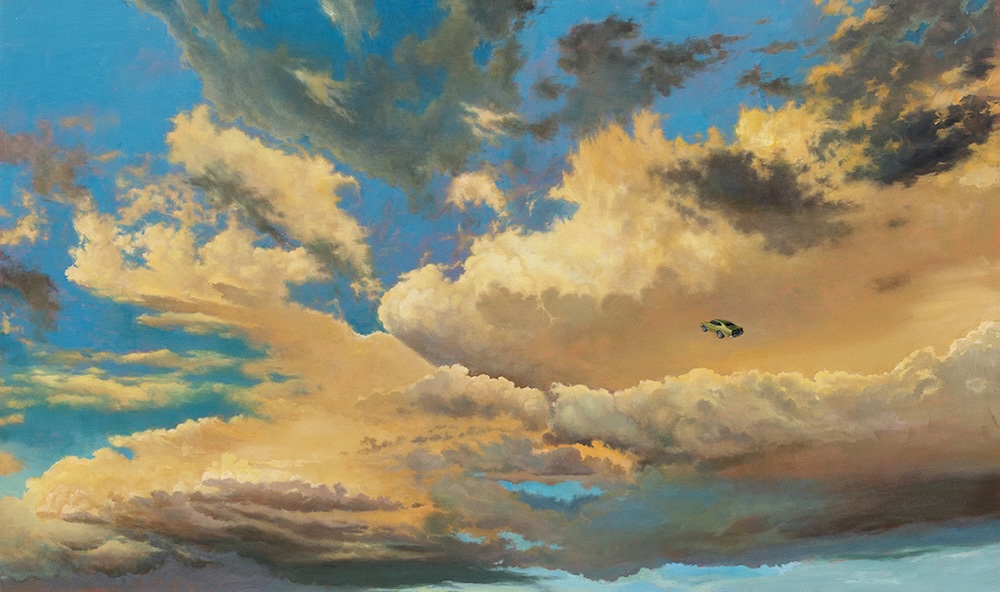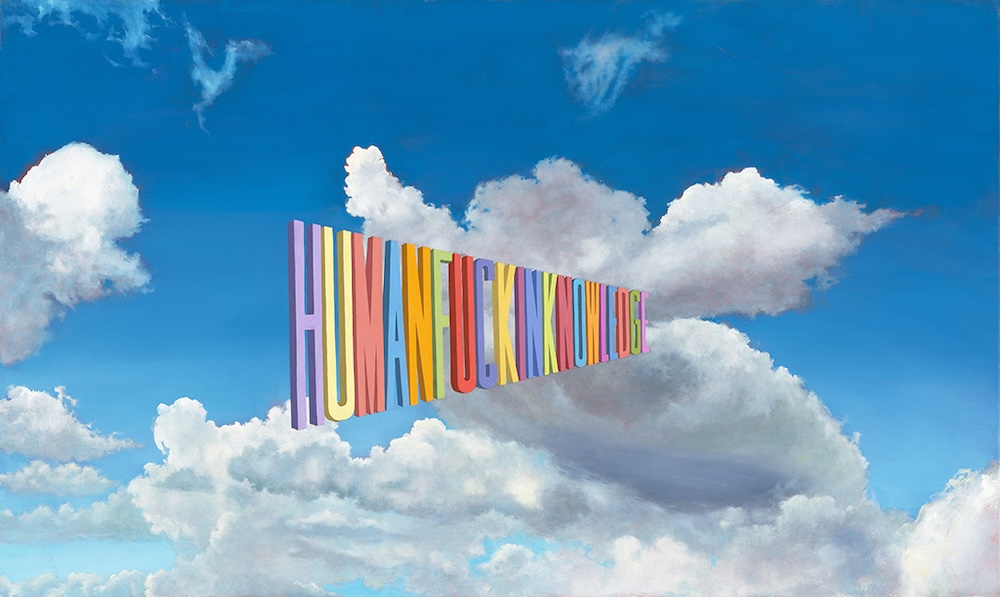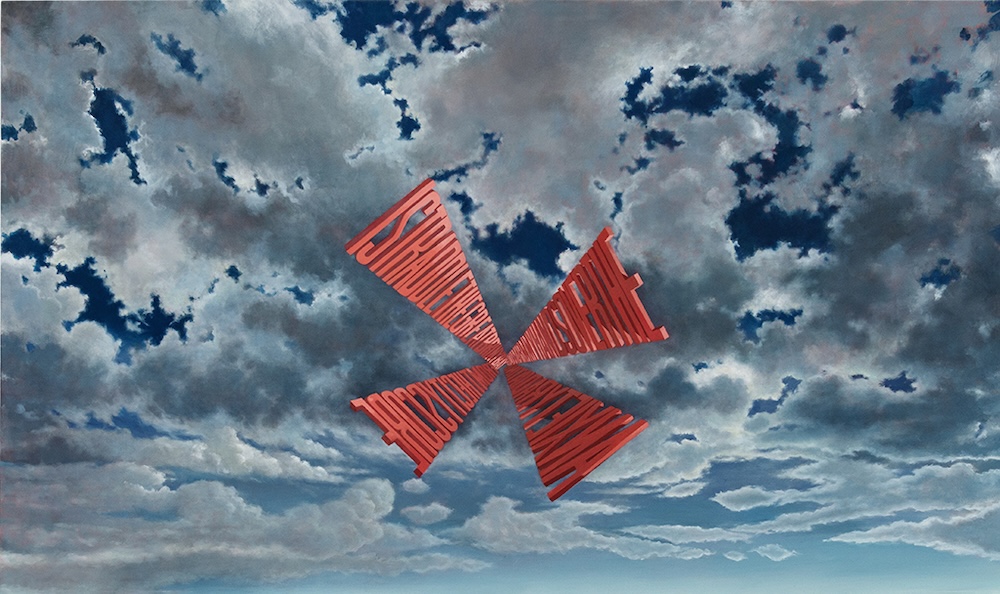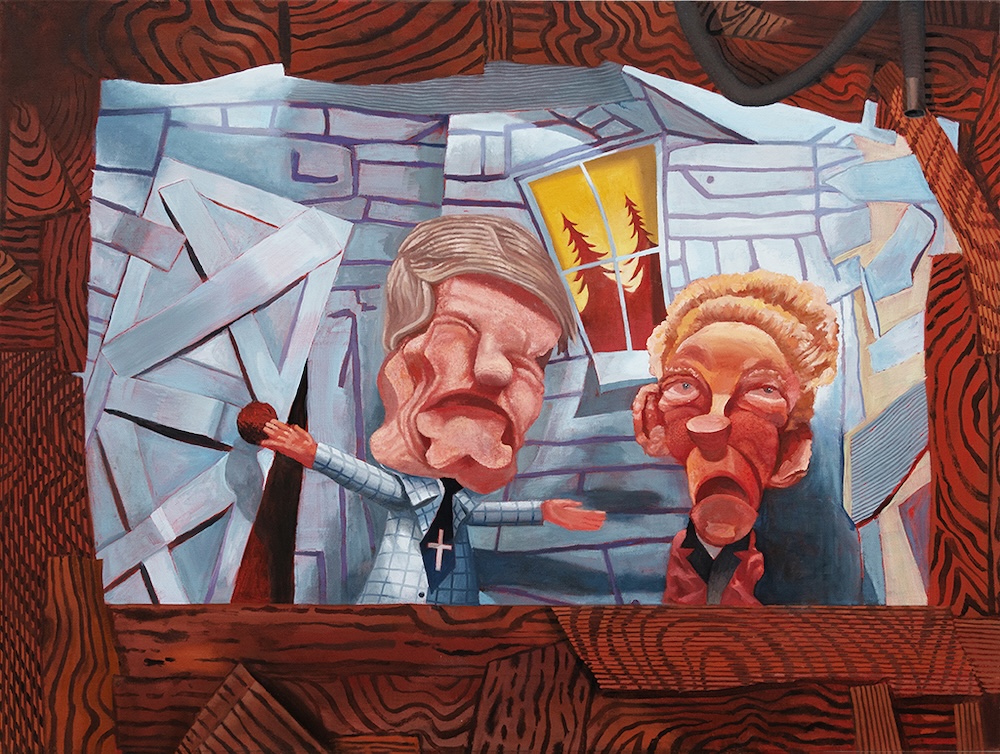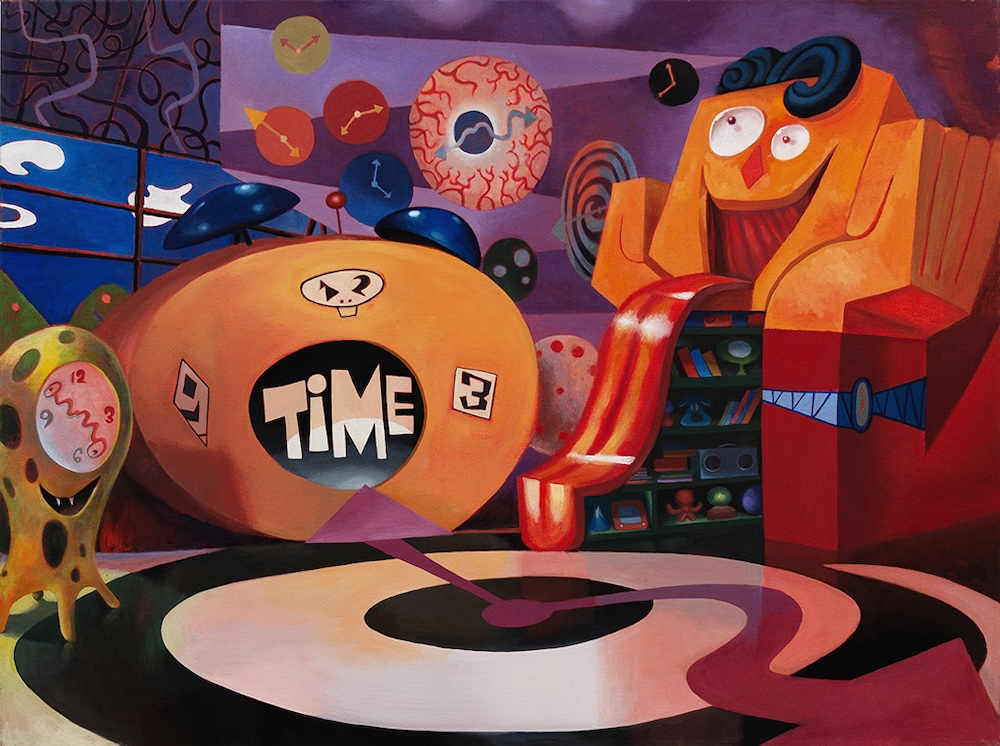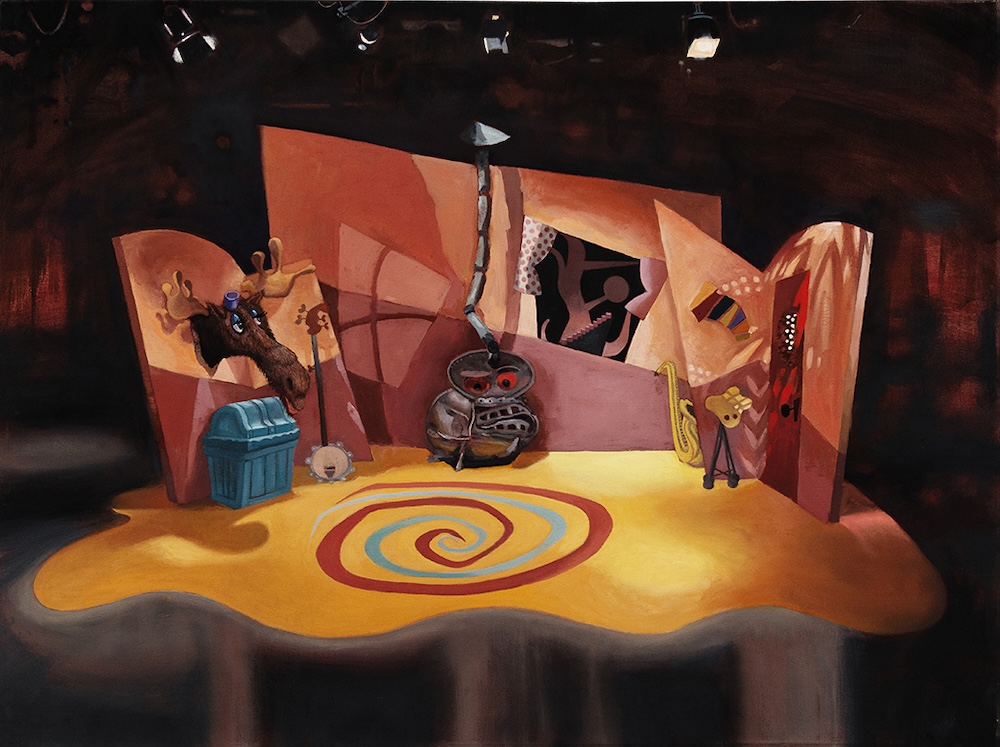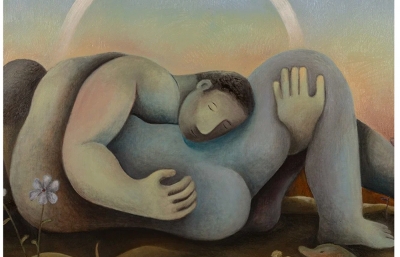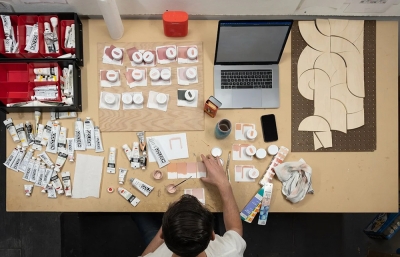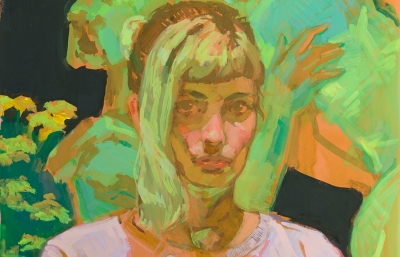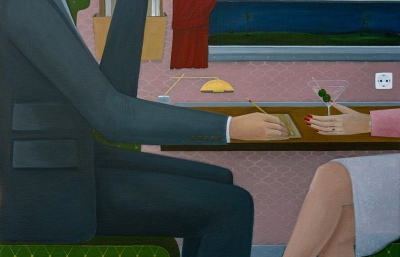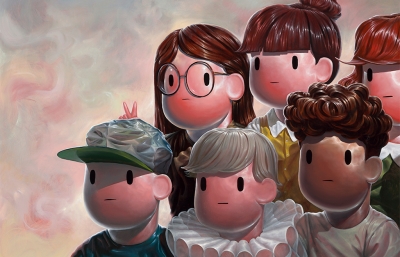It would be an overstatement to say that all visual culture stemming from mass media aesthetics can be traced back to a single person. But if there were such a person, it would be Wayne White. Consider how many animators, artists, and directors cite the sets and characters of Pee Wee's Playhouse or Shining Time Station with Ringo Starr as deep set inspirations for their careers. Everything from the earnest silliness of SpongeBob SquarePants to the stop animation of The Nightmare Before Christmas and the provocative animations of Adult Swim can trace thematic or stylistic similarities back to the artist’s prolific output.
But all that was commercial work “centered on pleasing clients and getting paid.” Through his Los Angeles success story, White has also spent time focusing on personal artistic pursuits, painting and making larger-than-life puppets inspired by his Southern upbringing. His latest solo exhibition at Hashimoto Contemporary, Jumping From Ice Floe to Ice Floe, spans White’s creative output as he continues his renowned Word Painting series and expands into figurative paintings that document his time in the television industry.
Before his exhibition opened, White spoke with Virginia MOCA curator Heather Hakimzadeh—who also curated the exhibition at Hashimoto Contemporary—about being a superstar from the South, his long and varied career, and maintaining authenticity while trying to get paid.
Heather Hakimzadeh: Can you tell me a little about what this exhibition means to you and the imagery that it evokes?
Wayne White: JFIFTIF is my description of surviving as an artist. I’ve used it since I left Tennessee 1981, when I moved to New York City. It’s a movie in my head about the fast moving, dangerous world of NYC and LA. I’ve been in survival mode for a long time. It’s also comical in its overly melodramatic narrative. How has that affected my art? I don’t know. I have a long visual record of all the different jumps and decisions I’ve made. I’m using it now as a title because I might as well, since it’s always in the front of my mind when taking on a new project.
Your connection to your Southern roots seems deeply ingrained in your artistic expression. Can you elaborate on how this heritage influences the themes and motifs present in your work? Additionally, how do you navigate incorporating these elements while also exploring broader concepts and experiences in your art?
Being from the South is a lesson in duality. Love/Hate and all that stuff. I had to leave the place to become the artist I wanted to be. You live in a state of estrangement and sentimental longing. Opposites are the core of all art. My “Southern Thing” keeps me instinctively reminded of that.
More specifically, I enjoy using Southern myths of my childhood—Crazy Hillbillies, Scarecrow Soldiers and Bearfighting Frontiersmen as subjects. Again, Funny/Brutal, Child/Man and on and on. My word paintings are Rock City Barns. Growing up in Hixson, Tennessee was good training for an artist. Or maybe not. It’s complicated.
I would like to talk about this word, “hillbilly.” Some think it’s derogatory, but you seem to have pride in the word. Tell me how you see yourself connected to this. Is it part of what you consider your identity?
Yes, I am from the Southern end of the Appalachian Mountain Chain. My Father plowed fields with a mule and picked cotton on top of Sand Mountain, Alabama. I grew up with the cartoon hillbilly image everywhere—it is comfort food to me. I instinctively use it as a motif in drawing, painting, and sculpture. It is the perfect happiness of roaming free, getting high and good dogs.
Can you talk to me a little about the difference in process between your studio work and your more commercially focused work like set design. All this work looks like it is quintessentially you and has many of the same elements despite their very different aims. What makes them different in your mind? Or is there a difference in process at all?
My commercial work was centered on pleasing clients and getting paid. I was proud I could do that. It isn’t easy surviving in mean old LA. The pressure squeezed ideas out of me. I still rely on deadlines to inspire and motivate. Only now I get to do everything my way. I’m corny. I want to enchant the audience. And I still want to get paid.
I work with a lot of emerging artists and am interested in how that movement through projects begins and how much is planned. You have successfully moved between a traditional studio art practice and more commercial projects. How do you maintain a sense of control when you are maneuvering through your decisions? How do you choose what takes priority?
Being an independent artist working in a studio was always my goal. But I spent 20 years prior to that in show business as a set designer, puppet designer, and puppeteer. I learned how to create walk-through environments and dolls that talk. I carried that craft over into the art world without even thinking about it. But I’m thinking of my art hero, Red Grooms, and all the 3D worlds he created. I have a desire to step into my pictures and wander. The wandering is where the ideas come from. There just lying around in this world I started up. I control it at first and then it takes over and shows me what it wants to. It’s a mystery you have to believe in. Drawing a world and then making that world is always my mission.
I’m curious about this new body of work that you are creating. They seem to be from the reference point of the viewer: entering into a gallery to encounter an installation, the television set paintings make me feel like I’m in the audience. Is that the moment we are encountering, the second before you step into the world? Is that how the process begins for you, that moment of empathy for how the viewer will first experience your three-dimensional works?
I chose to paint pictures of my past projects because I needed backgrounds for words. And then I painted the first one and knew that I didn’t want to put words over it. It had something on its own that I still can’t explain, and that’s good. I’m doing a bunch of them and still scratching my head. I always stumble into interesting stuff that way. The pictures are definitely about my world making. They’re also about the psychedelic experience of painting. Staring at something uncommonly long and stepping in. I guess the sets were like that too. It’s all the same.
You’re bending time in these new paintings: your past projects were based on your own recollections and research of history or figures that hold a place in the shaping of your identity. Now they have reappeared, a memory of a memory in a place where your sculpture is meeting your painting. I can’t figure out if that is a more compressed way to re-experience these moments, or a more expansive one. How are they hitting you?
All of these images are from boisterous places. Now they’ve entered the immense quiet mind of painting and become mysteries. They hit me as worlds within worlds.
I love this phrase “worlds within worlds.” What do you mean by that? How do these paintings encapsulate the essence of your past projects and transform them into something new within the quieter realm of painting?
The world of paint-Toothpaste tubes of pigment smeared on fabric. How to make that look good. The world of color—the love of warm for cool and vice versa, then the race is on.
The world of images—anything will do. I’ve chosen some sets and puppets of mine and run them through those first two worlds and now it’s coming out... as what? I’m encouraged.
I find this idea of opposites being the core of art intriguing. It makes me think of the play and humor in your work. It seems to me that you are often leveraging humor to facilitate more serious critiques of human behavior both historically and contemporaneously. Could you elaborate on how your incorporation of opposites in your artwork contributes to the humor you aim to convey?
My idea of opposites is hardly original. It’s the essence of all living things. Positive and negative supplies the electricity that keeps us alive and makes me squeeze out my humble thoughts on it. Opposite thoughts can often surprise each other. Surprise is what makes you laugh. I’m always looking for a surprise.
It's intriguing how, both in your work and our conversations, there's a sense that you were compelled to leave your hometown to establish yourself. Yet, your upbringing in the Southern end of the Appalachian Mountain Chain appears to be a consistent wellspring of inspiration for you. Do you see a resolution to this apparent dichotomy in your life and work? Additionally, what advice would you offer to aspiring artists from places like Hixson, based on your own experiences and journey?
The lamentations of the Southern expat are tedious to everyone except for a fellow expat, and they’re kind of hard to find. I think we all keep to ourselves because we enjoy our unique misery. No group hugs.
I don’t want it resolved in myself. It’s my opposition power source. My advice to a Hixson seeker is: Go somewhere where everybody is better at their craft than you and has no interest in your sentiments. You’ll learn fast how to keep up, if you really want to. And their indifference to your culture will make you see yourself as a citizen of the world. And as my Alabama Momma would say, “Just feel sorry for them and know you’re better than they are.” Or not.
Wayne White’s solo exhibition Jumping from Ice Floe to Ice Floe is on view at Hashimoto Contemporary Los Angeles through Saturday, June 8th. Installation and opening night images by Megan Cerminaro.

